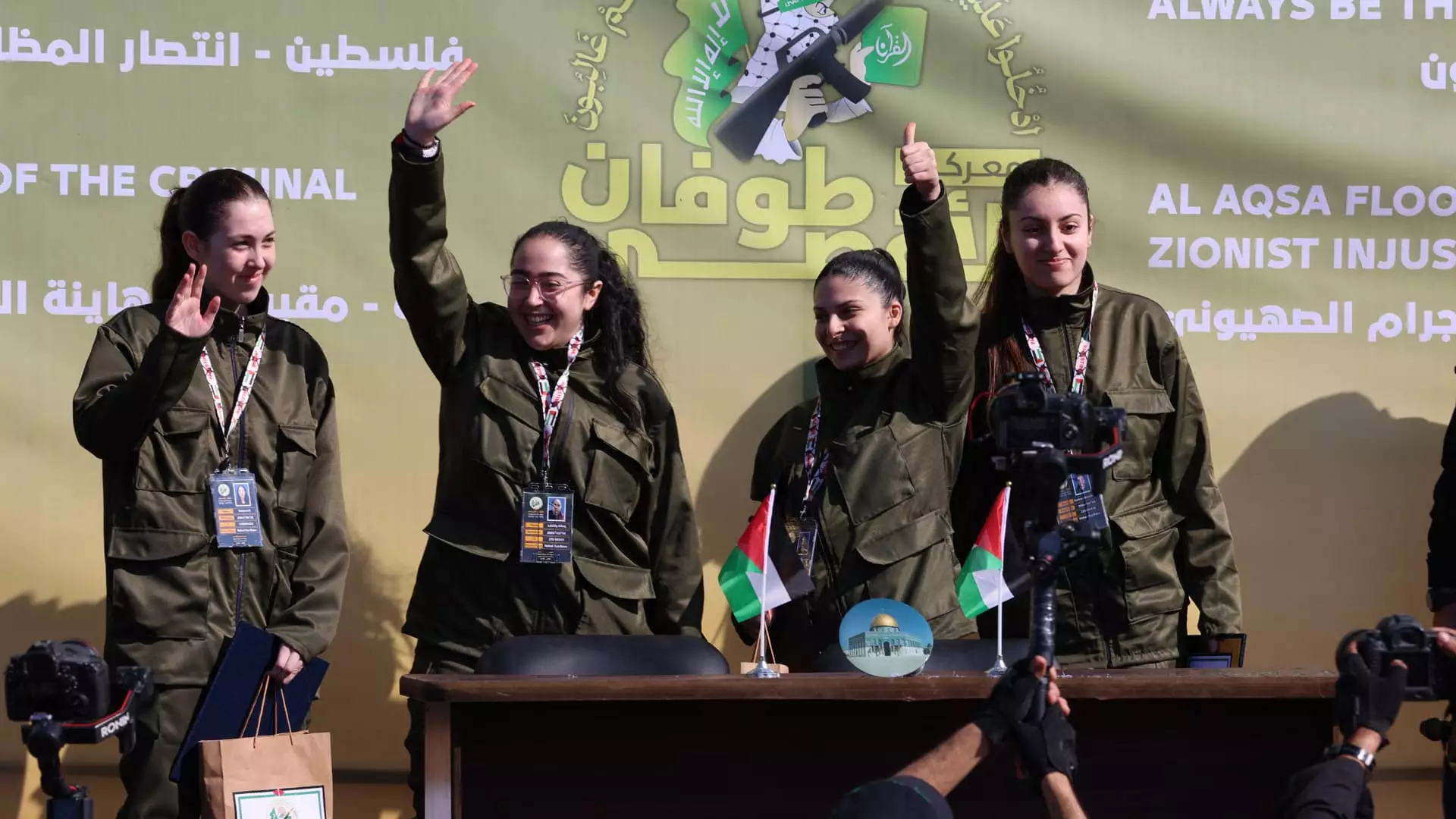On a recent Saturday, the Palestinian militant group Hamas initiated a significant and yet complex hostage exchange, releasing four female Israeli soldiers in trade for around 200 Palestinian prisoners. This event unfolded against the backdrop of a fragile ceasefire agreement, with the overarching aim of alleviating the devastating impacts of a 15-month-long war in Gaza. The act of releasing these hostages symbolizes a fleeting moment of joy for many Israelis, contrasting sharply with the widespread suffering and loss experienced on both sides of the conflict. The polarized perspectives surrounding the act of negotiation highlight the complex dynamics of this situation.
The moment the four soldiers—Karina Ariev, Daniella Gilboa, Naama Levy, and Liri Albag—were led onto a platform in Gaza City, a wave of emotion swept through the crowd. They were greeted with cheers amidst the ever-watchful presence of armed Hamas members, signaling both the gravity of the event and the power dynamics at play. For families of the released soldiers, this moment was a culmination of anxiety transformed into relief and joy. Watching from a military base in Israel, their parents celebrated with tears and applause, solidifying the deeply personal impact of this political maneuver.
Yet, this positive moment was marred by disappointment among Israelis, as a female civilian hostage expected to be released was not included in the agreement. The conflicting narratives from both sides—the Israeli military describing this as a breach of ceasefire and Hamas attributing the issue to technical difficulties—further complicate the communication around this exchange. Prime Minister Benjamin Netanyahu’s subsequent remarks about restricting Palestinian movements until the issue is resolved reveal a politician balancing the need for national security with the pressures of public sentiment.
Negotiations: A Framework Rooted in Uncertainty
The ceasefire, which was brokered after extensive negotiations involving regional mediators such as Qatar and Egypt, introduced a temporary pause in the ongoing violence. Initial exchanges had brought some hope, as Hamas released three Israeli female civilians in return for 90 Palestinian prisoners earlier in the year. However, even during these fragile negotiations, the underlying complexities remained apparent. This most recent exchange lies within a larger framework that includes ongoing discussions about the fate of the remaining hostages, many of whom are military-age men, and the potential withdrawal of Israeli forces from Gaza.
The stark statistics emerging from this conflict are sobering. As of the latest reports, approximately 90 hostages remain in Gaza, with many of their families mourning the uncertain fate of loved ones, some of whom have been declared dead in absentia. Israeli military operations have produced staggering casualty figures on both sides, with over 47,000 Palestinian deaths alongside more than 400 Israeli soldiers lost in combat since October 7, 2023. The human toll exacerbates the urgency of diplomatic resolution and underscores the catastrophic consequences of protracted conflict.
As the dust settles on this latest episode of hostage exchanges, the road ahead remains fraught with challenges. The alternating cycles of hope and despair, punctuated by occasional breakthroughs, paint a disheartening picture of a landscape marred by ceaseless violence and deep-seated animosity. With both sides facing immense pressure from their respective constituencies, they are caught in a tug-of-war between resolving immediate humanitarian crises and grappling with the broader geopolitical implications of their actions.
The future hinges on successful negotiations that address not only the immediate concerns surrounding hostages but also the long-term viability of peace in the region. The implications of such exchanges extend beyond the immediate release of prisoners—they serve as a critical juncture for potential dialogue and reconciliation. In this ongoing saga, every misstep can lead to escalation, while every sign of goodwill may pave the way for a much-needed pathway towards lasting peace.
The recent hostage exchange is emblematic of the broader challenges facing both Israelis and Palestinians. In a conflict where human lives hang in the balance, the moments of jubilation must be coupled with a deep understanding of the tragic context that surrounds them. The path to peace requires not only hard-fought negotiations but also a fundamental shift in how both sides perceive one another—a challenge that, despite the pain of the past, must be faced head-on for any hope of a brighter future.


Leave a Reply